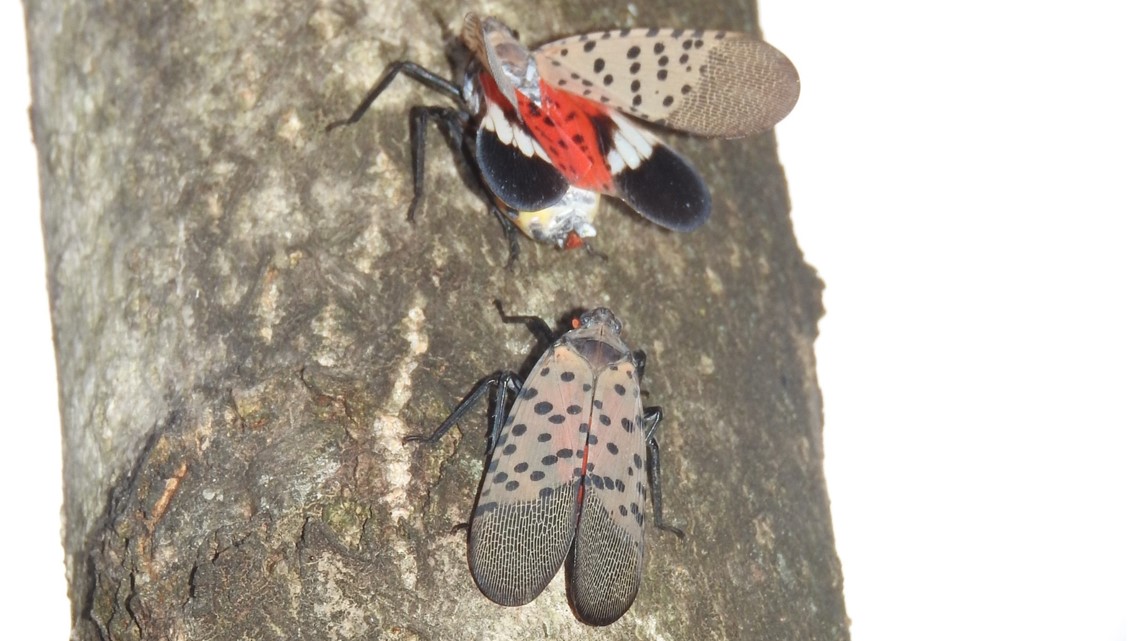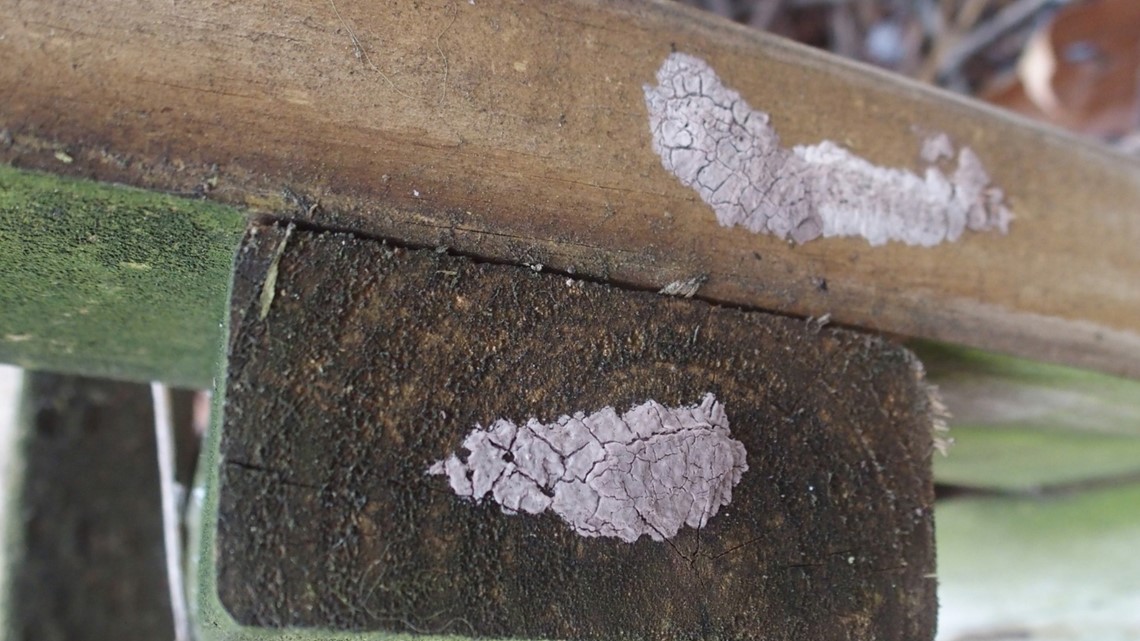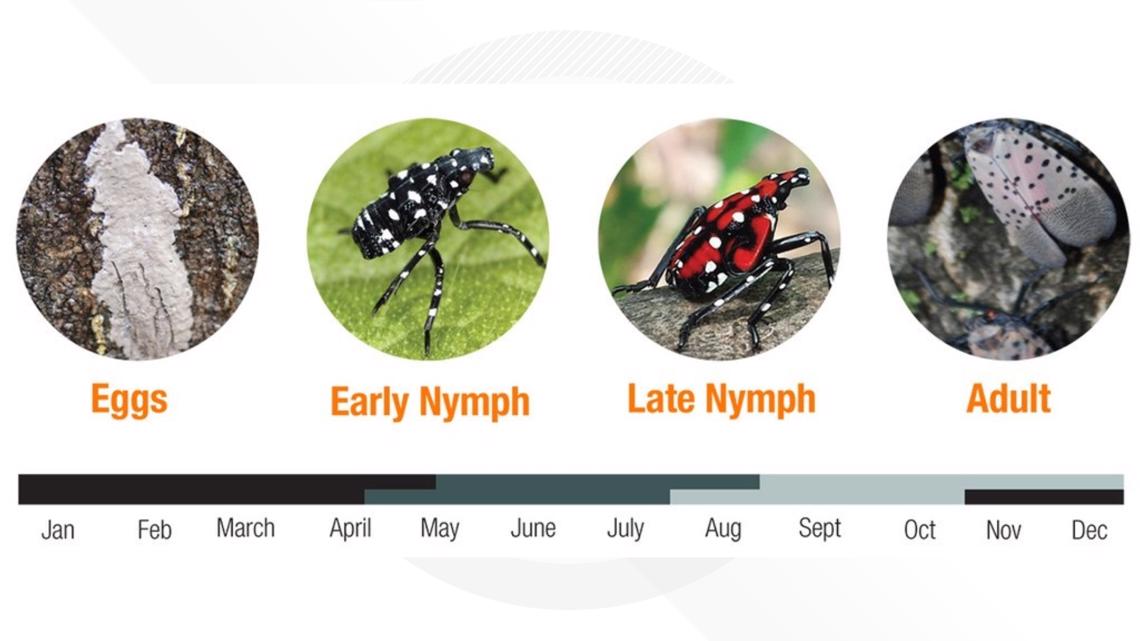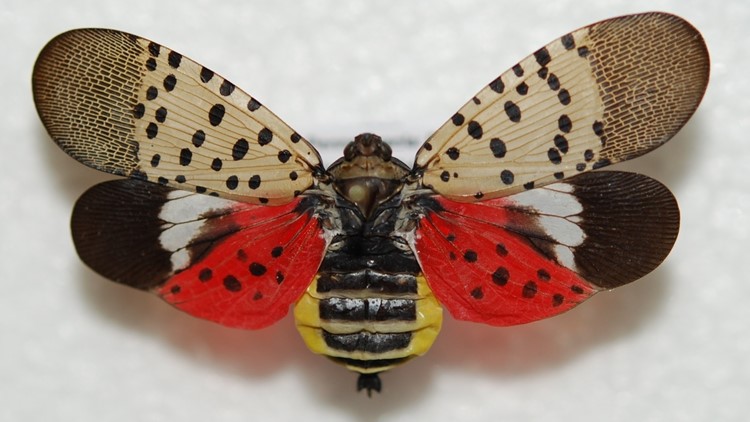LANSING, Mich — It's called the spotted lanternfly and according to the Michigan Department of Agriculture and Rural Development (MDARD), we should all be on the look out for it.
The spotted lanternfly is an invasive insect and MDARD said it has the potential to seriously affect Michigan's agriculture and natural resources. A press release about the insect said it could damage or kill more than 70 new varieties of crops and plants, including grapes, apples, hops and hardwood trees.
The spotted lanternfly hasn't been spotted in Michigan yet, but it's been spreading rapidly across the nation. The insect was first found in the U.S. in 2014 in southeastern Pennsylvania. Infestations have been confirmed in Delaware, Virginia, New Jersey, Maryland and West Virginia.


MDARD said the spotted lanternfly causes direct damage by sucking sap from host plants and leaving behind a sticky liquid called honeydew. The honeydew develops into a black, sooty mold that can kill plants and attract other pests, particularly hornets, wasps and ants. This can negatively impact crops and plants.
“Spotted lanternfly could negatively impact our grape industry,” said Robert Miller, invasive species prevention and response specialist for MDARD. “But it also has the potential to damage stone fruits, apples and other crops in Michigan’s fruit belt as well as important timber species statewide.”
“Prevention and early detection are vital to limiting the spread of spotted lanternfly,” said Miller. “Spotted lanternfly cannot fly long distances, but they lay eggs on nearly any surface, including cars, trailers, firewood and outdoor furniture. Before leaving an area where a quarantine is present, check vehicles, firewood and outdoor equipment for unwanted hitchhikers.”
How to identify a spotted lanternfly
Spotted lanternfly egg masses resemble old chewing gum, with a gray, waxy, putty-like coating. Hatched eggs appear as brownish, seed-like deposits.


Spotted lanternfly nymphs are wingless, beetle-like and black with white spots, developing red patches as they mature.
Adults are roughly one inch long. Their folded wings are gray to brown with black spots. Open wings reveal a yellow and black abdomen and bright red hind wings with black spots transitioning to black and white bands at the edge.


If you find a spotted lanternfly egg mass, nymph or adult, take one or more photos, make note of the date, time and location of the sighting, and report to the Michigan Department of Agriculture and Rural Development via email at MDA-Info@Michigan.gov or phone the MDARD Customer Service Center at 800-292-3939. If possible, collect a specimen in a container for verification.
RELATED VIDEO:
MORE on 13 ON YOUR SIDE:
►Make it easy to keep up to date with more stories like this. Download the 13 ON YOUR SIDE app now.
Have a news tip? Email news@13onyourside.com, visit our Facebook page or Twitter. Subscribe to our YouTube channel.




